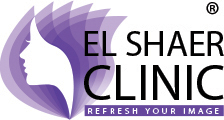- Refresh Your Image
- +2 015 504 33 1 55
- info@elshaerclinic.com
Is Your Current Bad Debt Allowance Reasonable?
Content
Since at least one of these conditions is usually met, companies commonly use total net sales rather than credit sales. You are willing to accept the risk that a few customers might not pay you, in order to gain sales from customers who simply need more time to pay.
- Moreover, using the direct write-off method is prohibited for reporting purposes if the company’s business model is characterized by a significant amount of credit sales (i.e. paid on credit) with large A/R balances.
- The amount to be recorded in the accounts is determined using the percentage of sales or the account receivable aging method.
- Typically, the allowance method of reporting bad debts expenses is preferred.
- For this reason, banks usually create what we call a reserve account for accounts receivable that is likely to become bad debts.
- The note receivable is recorded at its face value, the value shown on the face of the note.
- Similar to its name, the allowance for doubtful accounts reports a prediction of receivables that are “doubtful” to be paid.
They are created or gained through transactions directly or closely related to your business or trade. A loss from a business bad debt occurs once the debt acquired or gained has become wholly or partly worthless. Direct write off method (Non-GAAP) – a receivable that is not considered collectible is charged directly to the income statement. An aging report groups a business’s accounts receivable by their age (e.g. current, 30 to 60 days, 60 to 120 days, Over 120 days, etc.).
How Do You Budget For Bad Debt?
Two primary methods exist for estimating the dollar amount of accounts receivables not expected to be collected. Bad debt expense can be estimated using statistical modeling such as default probability to determine its expected losses to delinquent and bad debt. The statistical calculations can utilize historical data from the business as well as from the industry as a whole. The specific percentage will typically increase as the age of the receivable increases, to reflect increasing default risk and decreasing collectibility. Bad debt expenses are generally classified as a sales and general administrative expense and are found on the income statement. Recognizing bad debts leads to an offsetting reduction to accounts receivable on the balance sheet—though businesses retain the right to collect funds should the circumstances change. The estimated percentages are then multiplied by the total amount of receivables in that date range and added together to determine the amount of bad debt expense.
This is because, under this method, the ending balance of allowance for doubtful accounts should be a percentage of the accounts receivable ending balance. Once the percentage to be applied is determined, just apply it to the accounts receivable balance. Just multiply the percentage rate to the business’s net credit sales or total credit sales. If the percentage to be applied is already determined, then the estimate for bad debt expense can be computed. The main advantage of using the direct write-off method is that amount of bad debt expense recognized is equal to the actual amount of bad debt. For example, on December 1, a business declares $5,000 of its accounts receivable as uncollectible due to the customer becoming bankrupt.
Estimating The Bad Debt Expense
Furthermore, businesses are judged by potential investors on their financial statements, which means that a bad debt could make your business look like it isn’t doing as well as it is in reality. Consequently, it’s important to classify bad debts as bad debts so that investors can see that all your accounts are in good order.
The understanding is that the couple will make payments each month toward the principal borrowed, plus interest. A reserve for doubtful debts can not only help offset the loss you incur from bad debts, but it also can give you valuable insight over time. For example, your ADA could show you how effectively your company is managing credit it extends to customers. It can also show you where you may need to make necessary adjustments (e.g., change who you extend credit to). Bed debts under this method recognize as a certain percentage of the sale made or outstanding debtors based on their aging and transfer such amount to a separate account known as Allowance for Doubtful debts.
The Division Of Financial Affairs
To protect your business, you can create an allowance for doubtful accounts. As you consider the importance of bad debt provisions and how to strike a balance between too low and too high, think about setting an organization-wide standard like the aforementioned example of the Indian credit provider. Having a set strategy for accounting for bad debt can streamline your organization and ensure all accounts comply with local provisioning standards. Having a high level of loans that don’t bring in a return on investment, also called non-performing assets , reflects poorly on a company’s financial health and can turn away potential customers and investors.
- The second strategy is determining the amount to be kept as a reserve for the bad debt.
- For example, the accounting profession in the United States encourages the use of the terms allowance, provision or accumulated rather than a reserve, which could be misinterpreted as money set aside.
- During the COVID-19 crisis, many companies have been unable to execute their normal operating activities — and it’s still unclear how long the economic effects of the pandemic will last.
- The possibility of bad debts is high, so it is important to prepare for it.
The business will also create a bad debt reserve – also known as an allowance for doubtful accounts – to reflect the estimation for uncollectible or Bad Debt Expense bad debts. C. Compute bad debt estimation using the balance sheet method of percentage of receivables, where the percentage uncollectible is 9%.
Topic No 453 Bad Debt Deduction
In that case, you simply record a bad debt expense transaction in your general ledger equal to the value of the account receivable . An allowance for doubtful accounts is a contra-asset account that reduces the total receivables reported to reflect only the amounts expected to be paid. Bad debt is an expense that a business incurs once the repayment of credit previously extended to a customer is estimated to be uncollectible. Bad debt expense is the way businesses account for a receivable account that will not be paid. Bad debt arises when a customer either cannot pay because of financial difficulties or chooses not to pay due to a disagreement over the product or service they were sold. A concentration of credit risk is a threat of nonpayment from a single customer or class of customers that could adversely affect the financial health of the company.
- The accounts receivable aging method is a level above the other two methods.
- Recommend the treatment to be done in books of accounts by the whole seller if he opts for the allowance method for recognizing bad debts.
- Direct write off method (Non-GAAP) – A receivable that is not considered collectible, charged directly to the income statement.
- Estimating your bad debts usually involves some form of the percentage of bad debt formula, which is just your past bad debts divided by your past credit sales.
- So, to account for it, businesses usually write it off to be able to balance their accounts.
- It could be based on historical data, the business’s credit policy, or maybe even the industry average.
A schedule is prepared in which customer balances are classified by the length of time they have been unpaid. For a service organization, a receivable is recorded when service is provided on account. Bad Debt Expensemeans that amount due Contractor from accounts that the Contractor has determined to be uncollectable.
Developing Organizational Provisioning Standards
Since no company can avoid bad debt entirely, the trade credit insurance policy is in place to cover any losses that occur even after the company and the insurer have taken steps to minimize losses. This is applicable when you have already accounted for VAT but your customer defaults on full or partial payment.
Tax TipsA Beginner’s Guide to Record-Keeping for Small Businesses Get an overview of all the different records and receipts you have to maintain as a small business owner and how to manage them efficiently. Bad debt expense forms part of your operating cost, including the cost of goods sold and administrative expenses . Bad debt provision strategy is about striking a balance between the minimum estimation and placing too much weight on potential crises that could happen but aren’t extremely likely to.
How To Determine Bad Debt Expense
In some cases, the debt might be too high to the extent that the business cannot continue with operations unless it seeks external funding. You do not want your business to achieve such a situation, and therefore, it is important to plan how to deal with bad debts in advance. The bad debt expense can only be recorded in a situation where you use the accrual accounting principles. However, this does not mean that the debt is not bad if you use other accounting methods. Its management estimates that 5% of the current accounts receivable will become bad debts.
To show that a debt is worthless, you must establish that you’ve taken reasonable steps to collect the debt. It’s not necessary to go to court https://www.bookstime.com/ if you can show that a judgment from the court would be uncollectible. You may take the deduction only in the year the debt becomes worthless.
Section 166 of the Internal Revenue Code provides the requirements for which a bad debt to be deducted. The information featured in this article is based on our best estimates of pricing, package details, contract stipulations, and service available at the time of writing. Pricing will vary based on various factors, including, but not limited to, the customer’s location, package chosen, added features and equipment, the purchaser’s credit score, etc. For the most accurate information, please ask your customer service representative. Clarify all fees and contract details before signing a contract or finalizing your purchase.
Financial And Managerial Accounting
The method looks at the balance of accounts receivable at the end of the period and assumes that a certain amount will not be collected. Accounts receivable is reported on the balance sheet; thus, it is called the balance sheet method. The balance sheet method is another simple method for calculating bad debt, but it too does not consider how long a debt has been outstanding and the role that plays in debt recovery. When reporting bad debts expenses, a company can use the direct write-off method or the allowance method.
How To Calculate And Record The Bad Debt Expense
Otherwise, it could be misleading to investors who might falsely assume the entire A/R balance recorded will eventually be received in cash (i.e. bad debt expense acts as a “cushion” for losses). The allowance for doubtful accounts is management’s objective estimate of their company’s receivables that are unlikely to be paid by customers. Regardless of your business’s size, it is advisable to understand how to calculate bad debt expenses. This will help you save your business from the adverse impact of bad debt. The business has to record a simple transaction in its ledger account.

